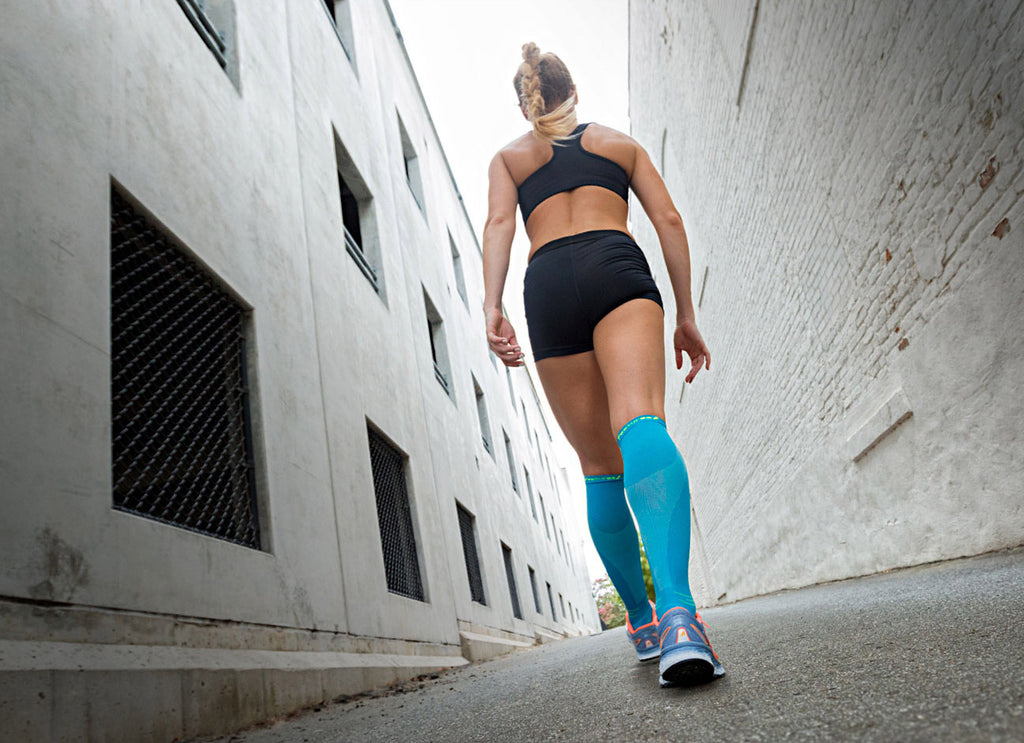

3, 20, 24ĭuring endurance running, the lower limbs absorb from 1.5 to 3 times the runner's body mass at every step, 16 and runners need more than 30 000 foot strikes to complete a marathon race (42.2 km). 6 In addition, heart rate (an indirect measure to estimate the efficacy of compression garments to improve cardiac output and systolic volume during exercise) is not significantly modified with the use of compression stockings.
SURPRISING BENEFITS OF COMPRESSION SOCKS FOR RUNNING TRIAL
Wearing graduated compression stockings during a 10-km running trial ameliorated the increase in lowerleg volume just after the exercise, but this effect disappeared only 5 minutes after the end of running. However, scientific data do not support this theory. The improved venous return caused by the application of mechanical pressure, in turn, increases end-diastolic volume and cardiac output during exercise, allowing athletes to perform at a higher intensity. 20 According to the manufacturers, compression stockings apply graduated compression around the calves, resulting in stimulation of the calf muscle pump and improved venous hemodynamics. 1 However, the use of graduated compression garments-especially compression stockings-by endurance runners is especially encouraged by the manufacturers' claims of improved running performance mediated by increased venous blood return. 22 Compression garments were initially designed to be used in the clinical setting to improve venous blood return and to reduce leg swelling and the formation of blood clots in patients with chronic venous insufficiency. If you think you could benefit from medical grade compression, talk to your doctor to see what will be best for you.Graduated compression garments are one of the most popular items of clothing in various endurance sports, such as running, 7 triathlon, 8 and cycling. Venous insufficiency, chronic edema, POTS, dysautonomia, DVT are just a few of the conditions for which a provider might prescribe compression socks.

Many people suffer from chronic health conditions that compression socks can help relieve. Learn more about compression socks for travel. Learn more about compression socks for runners.Īccording to a recent British study, "all forms of transport involving a journey of 4+ hours led to an increase risk of blood clots forming in the veins of the legs." Recent studies have concluded that airline passengers who wear compression stockings during flights can significantly reduce their risk of Deep Vein Thrombosis (DVT) as well as leg swelling. Even the casual fitness enthusiast can benefit from calf support and a speedier recovery. Long-distance runners have been known to wear compression socks for marathons or long trail runs. Using compression socks after working out increases the tissue oxygen recovery rate and has been shown to reduce muscle soreness by 28%. Learn more about compression socks for pregnancy. After a second or subsequent pregnancy, the odds increase to 55%. In fact, about 30% of all expectant mothers will experience varicose veins during their first pregnancy.

Pregnancy increases blood volume and pressure, which can inhibit blood flow and lead to swelling, fatigue and varicose veins. Learn more about compression socks for everyday wear. Standing isn't much better! Being on your feet puts a 20% greater strain on the circulatory system and on the legs and feet, which can cause fatigue and varicose veins. Sitting for 90 minutes or more can cause blood flow below the knees to decrease by 50%, significantly increasing the chance of blood clots and reducing the amount of freshly oxygenated blood to reach your legs. What are the benefits for me? For Sitting & Standing If you’re already dealing with venous insufficiency, a circulatory disease or are at risk for blood clots, you should definitely consider adding compression socks to your routine! Yes! Wearing compression socks daily can be an effective way to keep your legs healthy in the long run. By gently squeezing your legs, compression socks promote blood flow back to your heart and diminishes the likelihood of pooling blood that leads to circulatory problems. Our compression socks are made with graduated compression, which means the socks apply pressure that’s tighter at your ankle and gradually less tight up the leg. Protect the overall health of your legs.What are the benefits of compression socks?Ĭompression socks are a safe and effective way to reduce swelling in your legs, improve circulation and lower your risk of getting blood clots.

Our compression socks can be worn by people from all walks of life - from athletes to expectant mothers to people who sit or stand for long periods at work, like nurses and retail workers. Compression socks are a proactive way to maintain healthy circulation, reduce discomfort and help prevent vein disease.


 0 kommentar(er)
0 kommentar(er)
